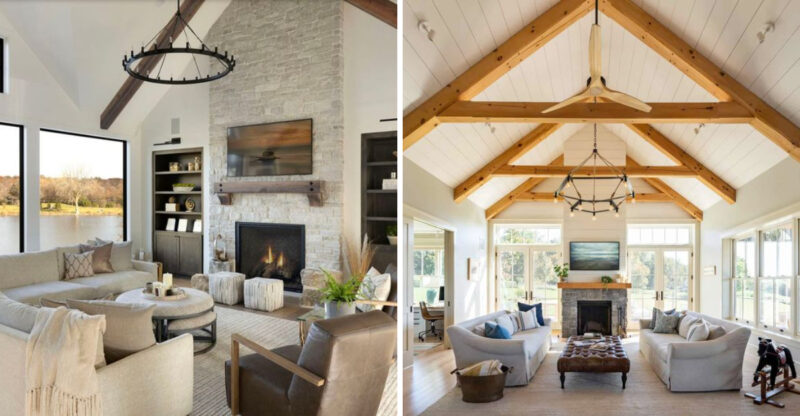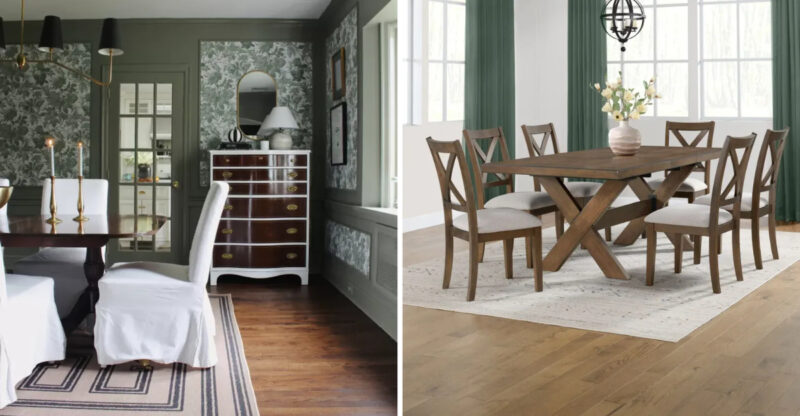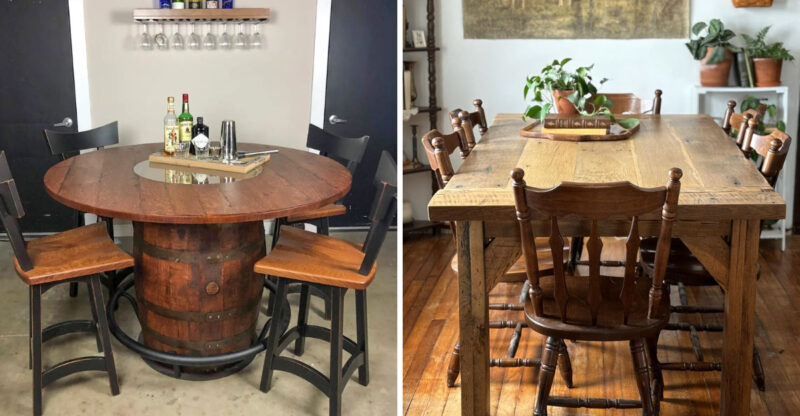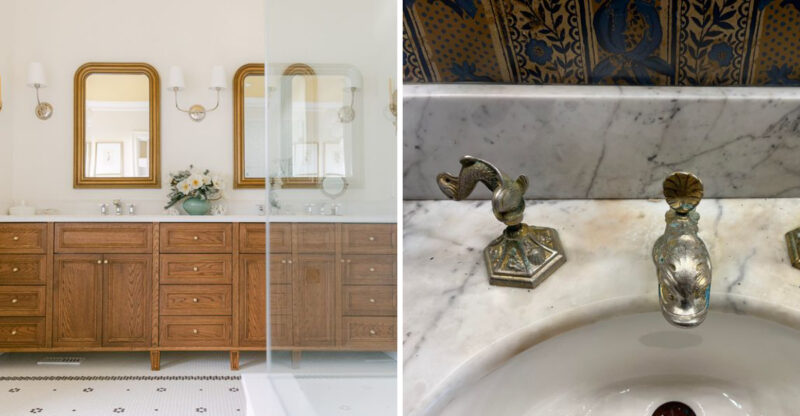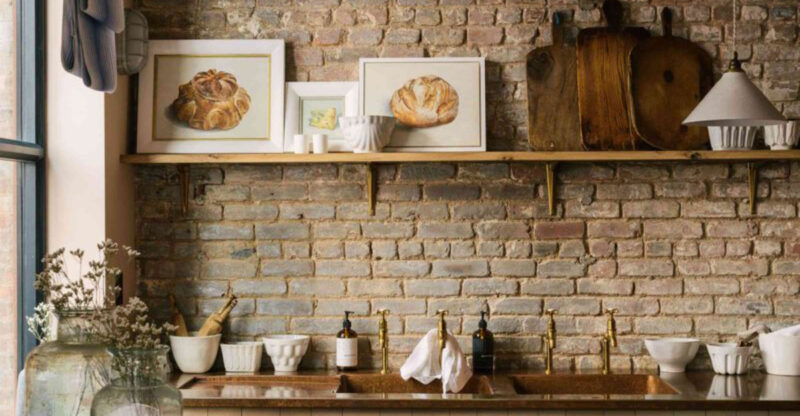Buyers Notice These 19 Living Room Flaws And They’re Walking Away
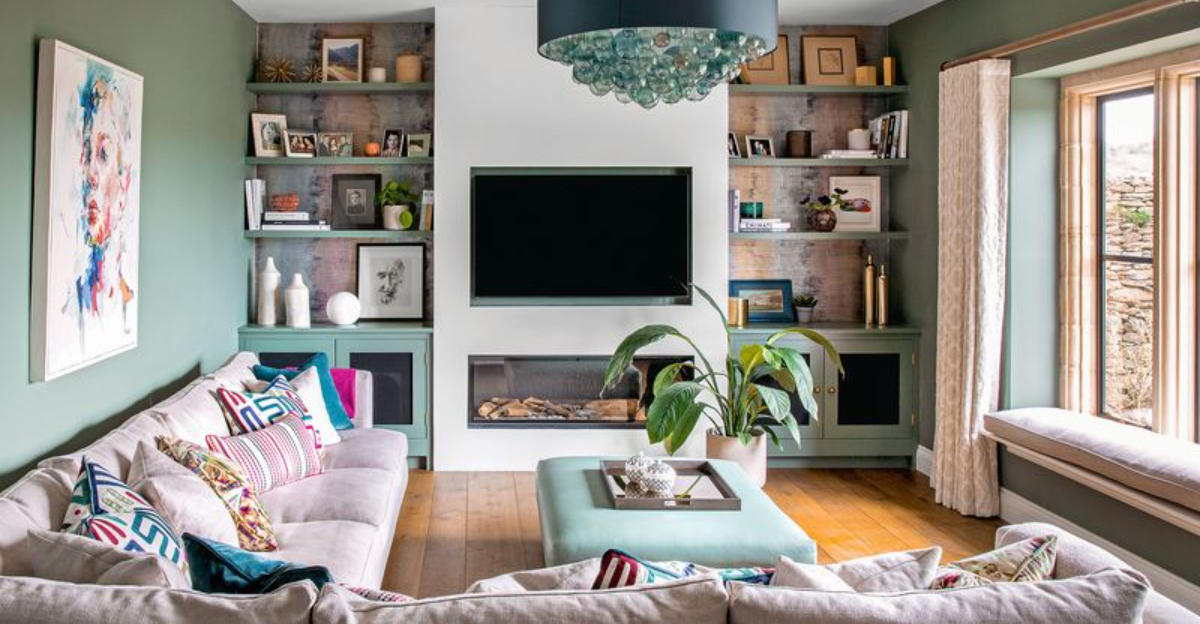
Your living room speaks volumes about your home before potential buyers even say a word.
It’s the first interior space they see and often makes or breaks their decision to purchase. Real estate agents know that certain living room issues can send buyers running for the door.
Let me share the top living room flaws that make buyers lose interest immediately.
1. Cluttered Spaces
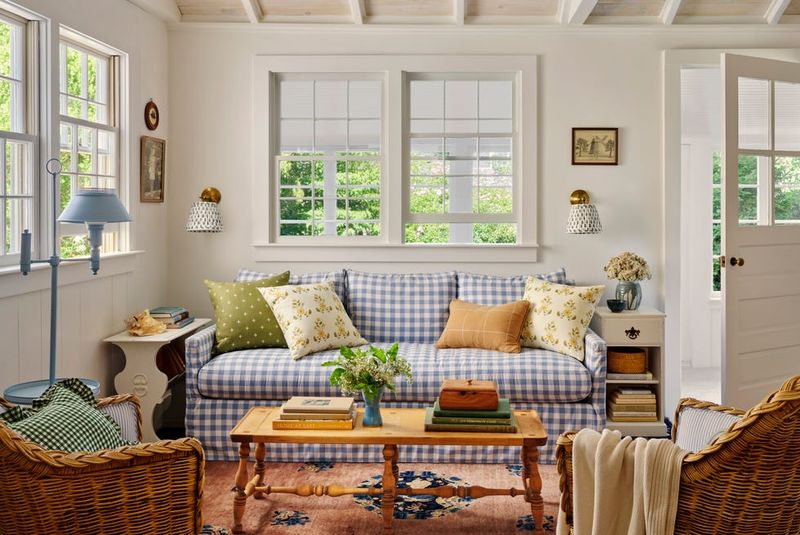
Excessive knickknacks and overcrowded furniture make buyers feel claustrophobic immediately. They can’t envision their own belongings in a space that’s already bursting at the seams.
Clutter creates the impression that your home lacks adequate storage, even if that’s not true. Buyers mentally calculate how much work they’ll need to do before moving in, and a cluttered living room signals major effort ahead.
Minimizing personal items and removing at least 30% of your furniture can dramatically change perceptions. Remember, you’re not just selling a house you’re selling the possibility of a lifestyle that feels spacious and organized.
2. Poor Lighting

Dim, shadowy living rooms create an instant negative impression that’s hard to shake. Buyers crave bright, welcoming spaces that feel cheerful and inviting, not cave-like rooms that require squinting.
Inadequate lighting makes rooms appear smaller, dingier, and less appealing regardless of their actual condition. Natural light is particularly crucial blocked windows or heavy drapes that restrict sunlight are major red flags for today’s buyers.
Adding floor or table lamps, replacing outdated fixtures, and maximizing natural light can transform the space. Even simply increasing bulb wattage and cleaning windows makes a tremendous difference in how spacious and welcoming your living room feels.
3. Outdated Furniture
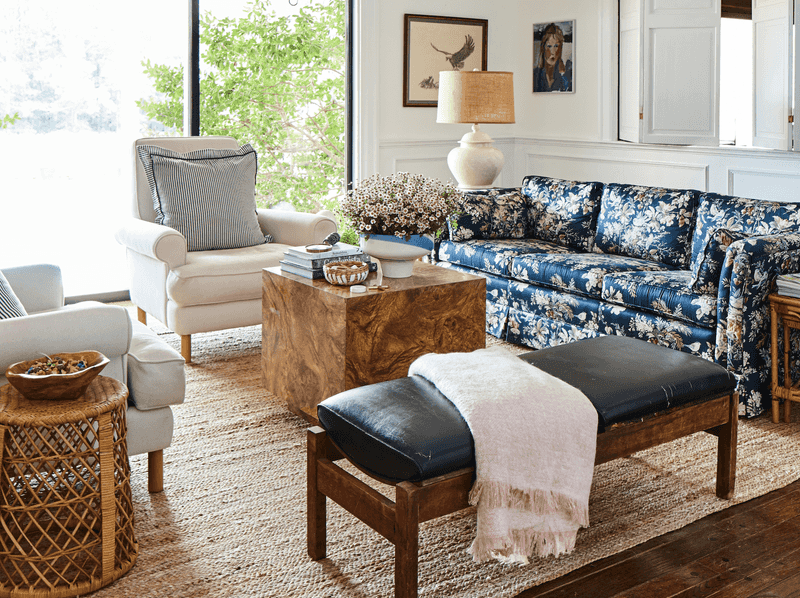
That floral sofa from 1985 isn’t just unfashionable it’s actively hurting your home’s value. Vintage charm has its place, but furniture that screams “time capsule” makes buyers wonder what else hasn’t been updated.
Heavy oak entertainment centers, bulky recliners, and matching furniture sets from decades past date your living room instantly. While buyers know they’ll bring their own furniture, outdated pieces make it difficult for them to visualize a modern lifestyle in your space.
If replacing furniture isn’t possible, consider renting contemporary pieces for showings. At minimum, remove the most dated items and arrange remaining pieces to create an open, updated flow that helps buyers see possibilities rather than problems.
4. Overstuffed Sofas
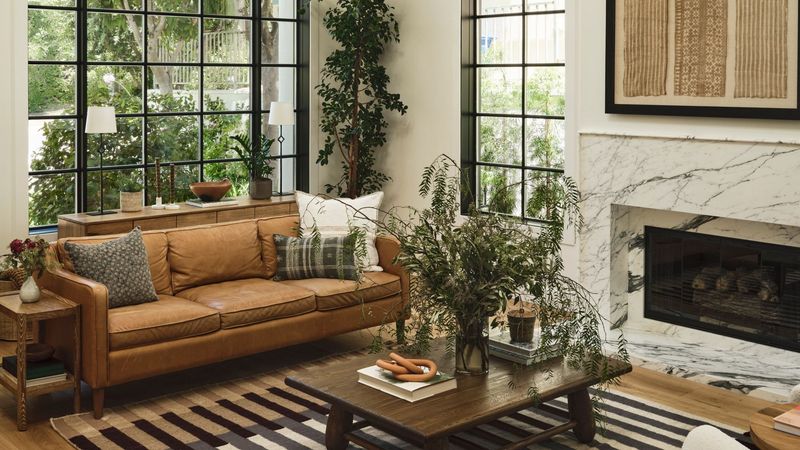
Massive, puffy sofas that dominate the living room create an immediate impression of outdated design sensibilities. These furniture dinosaurs from the 1990s and early 2000s make spaces feel smaller and clunkier than they actually are.
Buyers today prefer clean lines and proportional furniture that complements the room rather than overwhelming it. When a sofa looks like it required a construction crew to maneuver through the door, it suggests the room lacks flexibility and modern appeal.
Consider replacing overstuffed pieces with more streamlined options before listing. If that’s not possible, at least ensure the room isn’t overcrowded with multiple bulky pieces competing for attention and making navigation difficult.
5. Mismatched Decor
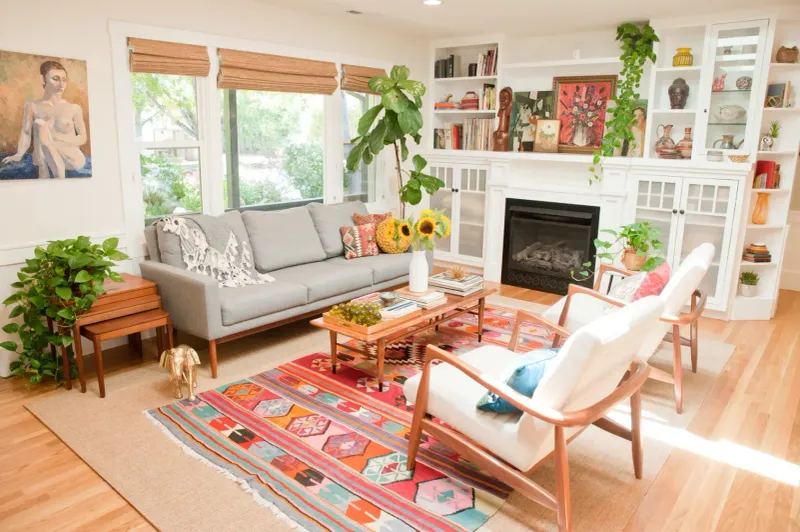
Haphazard decorating without any cohesive theme makes buyers uncomfortable on a subconscious level. When your southwestern rug clashes with Victorian lamps and contemporary art, the visual discord creates anxiety rather than harmony.
Buyers may not be interior designers, but they instinctively recognize when something feels “off” about a space. Random collections of unrelated styles suggest a lack of care and attention to detail that might extend to home maintenance.
Creating visual harmony doesn’t require professional staging, just thoughtfulness. Choose a simple color scheme and stick with complementary styles. Even eclectic decor can work when unified by color, texture, or theme rather than appearing completely random.
6. Dark Paint
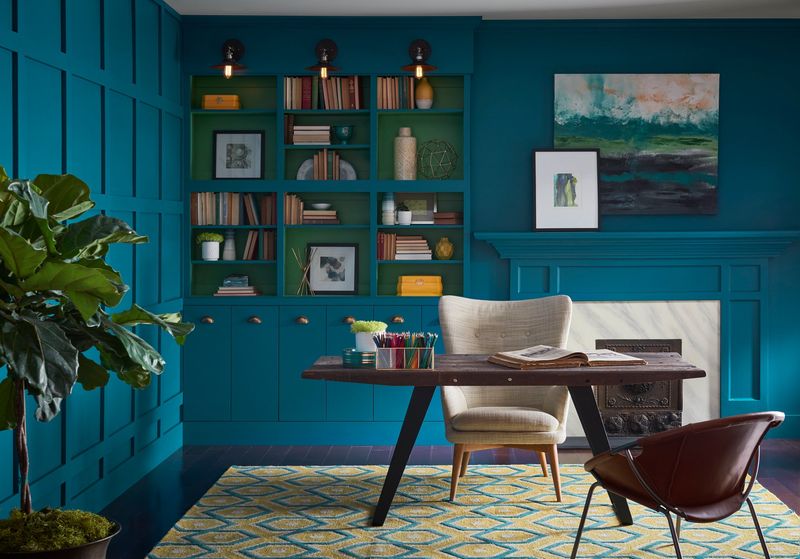
Moody charcoal walls might look dramatic on Pinterest, but they’re killing your home’s appeal to most buyers. Dark paint colors make rooms feel smaller, more confined, and often more dated three strikes in the real estate world.
Navy, deep purple, or chocolate brown walls absorb light instead of reflecting it, creating a cave-like atmosphere that most buyers find depressing. Even if the color is trendy, dark walls make it harder for buyers to imagine their own style in the space.
Repainting in light, neutral colors before listing is one of the most cost-effective improvements you can make. The psychological difference between dark and light walls is so significant that this simple change often adds thousands to perceived home value.
7. No Focal Point
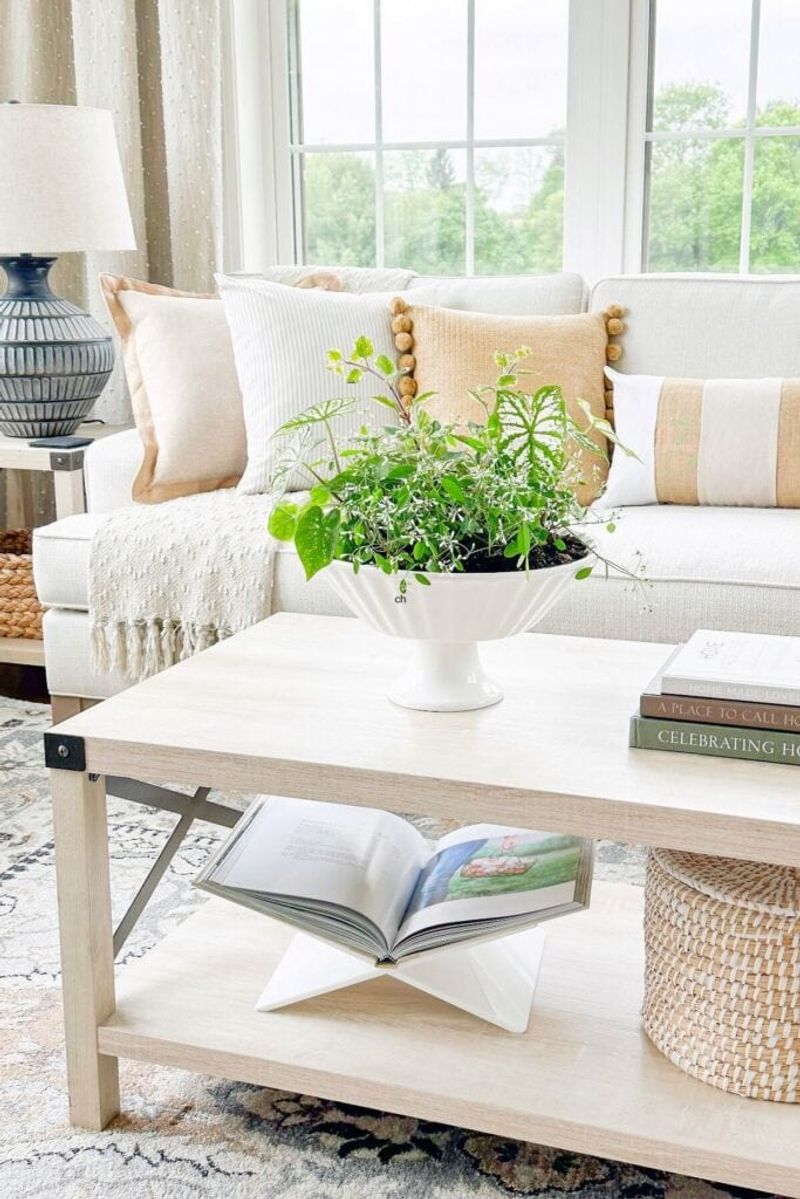
Living rooms without a clear focal point feel aimless and confusing to buyers. Human eyes naturally seek a central feature to orient around whether it’s a fireplace, picture window, or thoughtfully positioned media wall.
Furniture arranged without purpose creates an uncomfortable sense that something’s missing. When chairs and sofas face random directions or hug the walls without conversation areas, the room fails its primary function as a gathering space.
Creating a focal point can be as simple as rearranging furniture to highlight an existing feature or adding a striking piece of art. The goal is giving the eye somewhere to land first, then creating a natural flow that makes the room’s purpose immediately clear to anyone who enters.
8. Worn Carpets
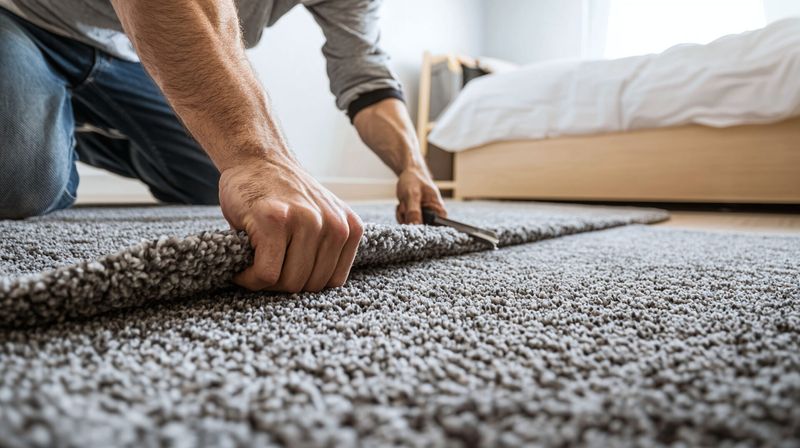
Nothing screams “neglect” louder than stained, matted, or threadbare carpeting. Buyers immediately calculate replacement costs when they spot worn paths, pet damage, or outdated carpet colors in your living room.
Even if the carpet is only moderately worn, buyers worry about what lurks beneath years of trapped allergens, pet accidents, and ground-in dirt that no amount of cleaning can fully remove. This concern extends beyond aesthetics to health considerations, particularly for families with allergies or young children.
If replacement isn’t possible, professional deep cleaning can help, but severe wear demands more drastic solutions. Consider exposing hardwood floors underneath if they exist, or installing inexpensive new carpeting the return on investment makes this almost always worthwhile.
9. Uncomfortable Seating

Rigid, awkward seating arrangements send buyers a subtle message that your home isn’t designed for relaxation. When potential buyers can’t imagine themselves unwinding after a long day, they struggle to connect emotionally with your space.
Formal, unwelcoming furniture choices like stiff-backed antique chairs or plastic-covered sofas create psychological distance. During showings, buyers often unconsciously test seating, and uncomfortable options reinforce the feeling that they’re visiting a museum rather than a potential home.
Arrange seating in conversational groupings that encourage interaction rather than lining walls. Even modest furniture can create an inviting impression when thoughtfully arranged to prioritize comfort and connection rather than formality or showing off matched sets.
10. Too Much Color
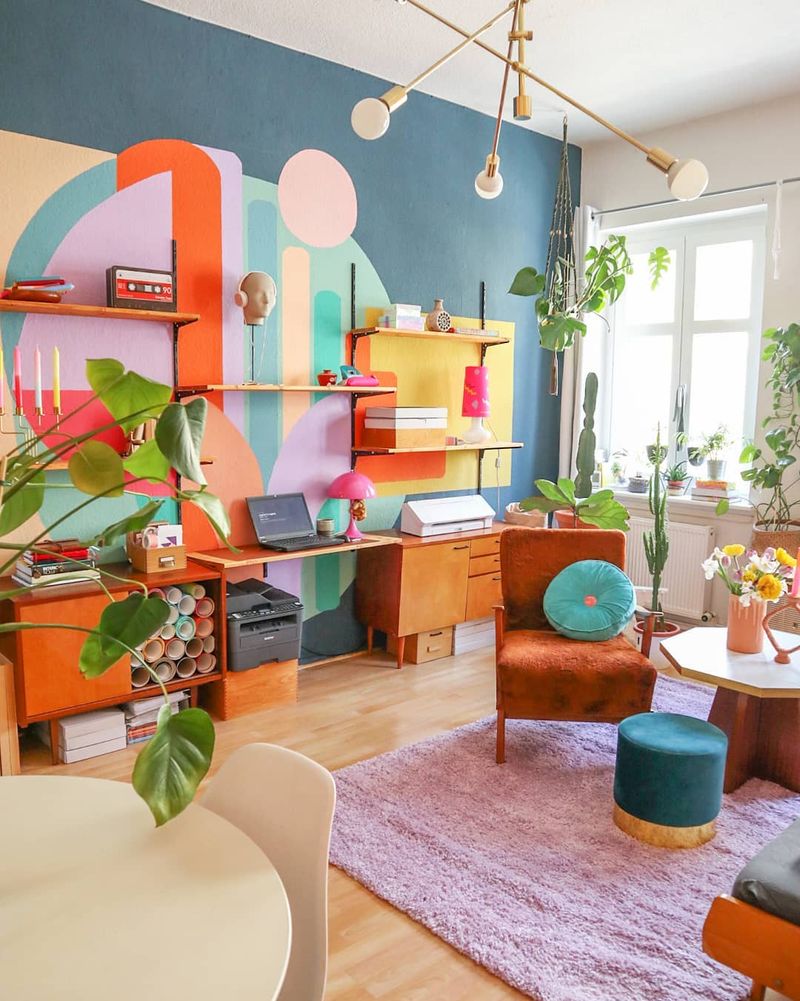
Rainbow-bright living rooms overwhelm buyers’ senses and distract from architectural features. While you might love your bold red accent wall paired with teal curtains and yellow furniture, such color combinations can feel chaotic and emotionally draining to others.
Multiple competing colors make spaces feel smaller and more cluttered even when they’re not. Buyers struggle to mentally “erase” bold color schemes, making it harder for them to envision their own style in the space.
Neutralizing doesn’t mean creating a boring, all-beige box. Subtle color through accessories allows personality while keeping walls, floors, and large furniture pieces in complementary neutral tones. This approach creates a calming backdrop that helps buyers focus on the home’s positive structural features.
11. Visible Cables

Tangled nests of exposed wires create an immediate impression of disorder and outdated technology. Buyers today expect clean, streamlined living spaces where technology integrates seamlessly rather than creating visual clutter.
Cable chaos suggests the home lacks adequate outlets or modern connectivity options. When buyers spot jumbles of extension cords or cables snaking across floors and walls, they mentally add “electrical work” to their post-purchase to-do list.
Simple cable management solutions like cord covers, strategic furniture placement, and wireless options can transform the impression completely. Taking time to conceal technology’s less attractive aspects shows attention to detail that buyers notice and appreciate, even if they can’t immediately identify why the room feels more polished.
12. Small Layout
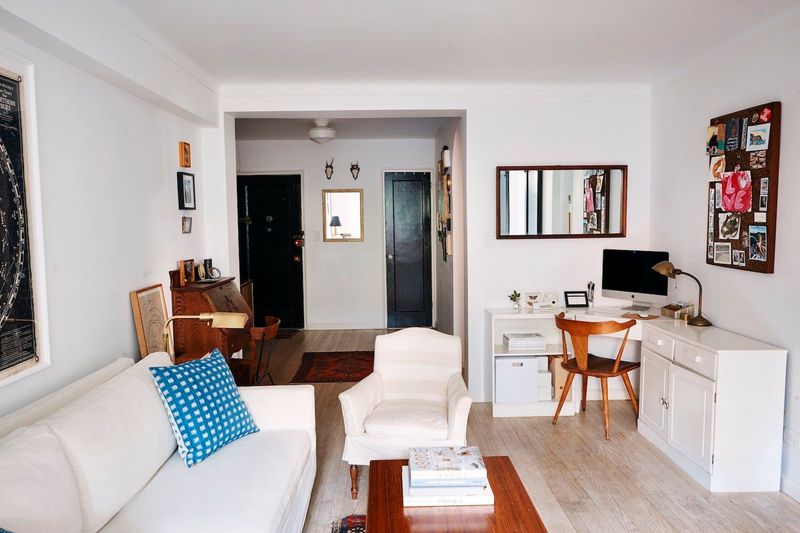
Cramped living areas with poor traffic flow make buyers feel trapped rather than at home. When furniture blocks natural pathways or requires awkward sidestepping to navigate the room, buyers immediately sense limitations they can’t easily fix.
Oversized furniture in undersized spaces compounds the problem dramatically. A sectional sofa that might work perfectly in a larger home can make a modest living room feel like a furniture showroom with no actual living space left.
Creating breathing room between pieces and establishing clear pathways through the space can transform perceptions. Sometimes removing just one piece of furniture opens up possibilities buyers couldn’t otherwise imagine, helping them see function and potential rather than limitations.
13. Busy Patterns
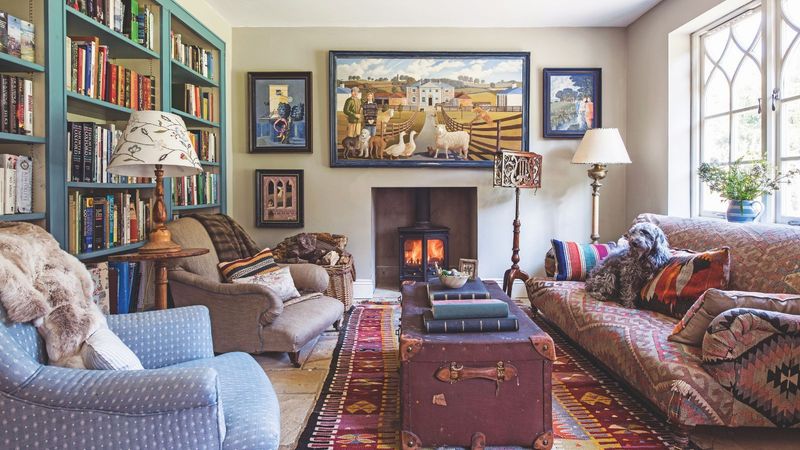
Wallpaper with intricate patterns or upholstery with bold designs can overwhelm potential buyers instantly. Visual busyness creates mental fatigue as the eye struggles to find resting places amid competing patterns.
Combining multiple patterns like floral wallpaper with striped furniture and geometric rugs creates a disorienting effect that makes spaces feel chaotic rather than cohesive. Even if the patterns are technically “on trend,” the overall effect can be jarring and off-putting to buyers seeking calm, neutral spaces.
If removing busy wallpaper isn’t feasible before selling, balance it with solid-colored furniture and minimal accessories. When patterns must stay, creating visual breathing room around them helps prevent the sensory overload that sends buyers toward the door.
14. Lack of Storage
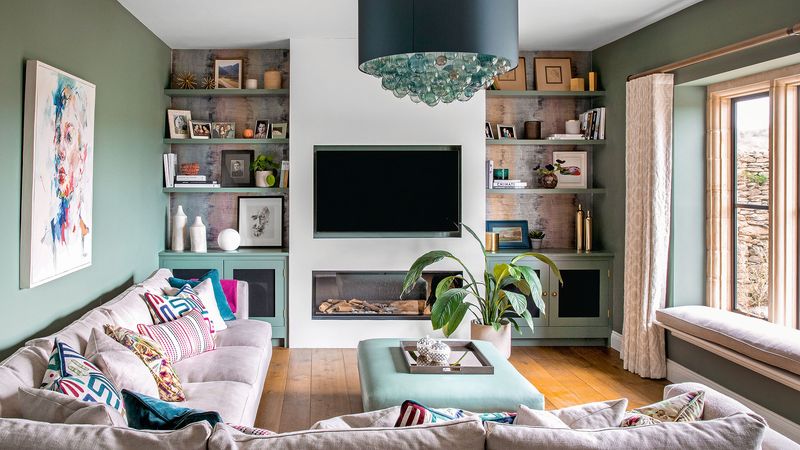
Living rooms without visible storage solutions make buyers wonder where they’ll put everyday items. Modern families need places for remote controls, gaming equipment, children’s toys, and media—without adequate storage, these items become instant clutter.
Open shelving filled to capacity suggests the home lacks sufficient closed storage options. When every surface is already maximized, buyers struggle to imagine how their own belongings would fit into the equation.
Adding multi-functional furniture like storage ottomans or media consoles with cabinets can transform the space’s functionality. Even clearing existing shelves to 50% capacity creates visual breathing room that helps buyers envision their own items finding homes rather than contributing to chaos.
15. Old Window Treatments

Yellowed blinds, dusty vertical slats, or heavy, outdated drapes from decades past create an immediate impression of neglect. Window treatments frame your view to the outside world and significantly impact how light enters the space.
Heavy, dark curtains that block natural light make rooms feel smaller and more closed-in than they actually are. Damaged or visibly dirty window coverings suggest deeper cleaning issues that might extend beyond what’s visible.
Replacing window treatments offers one of the highest visual impacts for relatively low cost. Simple, neutral options like white wooden blinds or light-filtering roller shades appeal to most buyers while maximizing natural light. Even just removing heavy, outdated treatments completely can dramatically improve buyer perception.
16. Cracked Walls
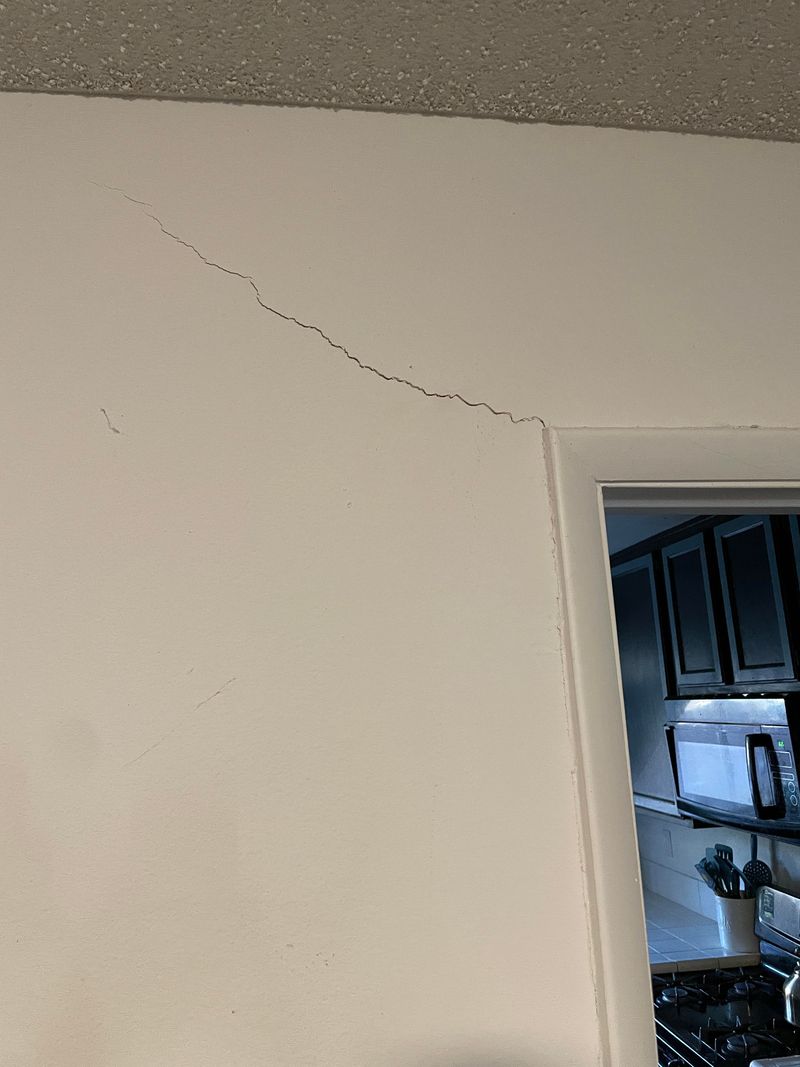
Wall damage sends immediate red flags about potential structural issues, even when cracks are merely cosmetic. Buyers notice even hairline fractures and wonder if they’re looking at simple settling or serious foundation problems.
Visible patches or amateur repair attempts often look worse than the original damage. When buyers spot uneven textures or mismatched paint covering previous cracks, they become hyperaware of potential hidden issues throughout the home.
Professional drywall repair before listing is almost always worth the investment. Beyond fixing actual cracks, ensuring consistent wall texture and fresh paint creates the clean canvas buyers expect. This simple fix prevents minor cosmetic issues from raising unnecessary concerns about your home’s structural integrity.
17. Untidy Shelves
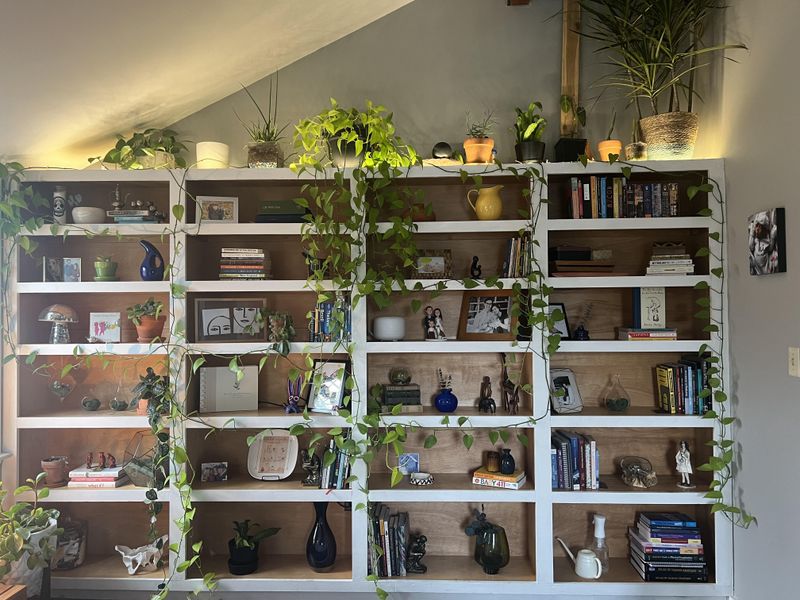
Chaotic bookshelves crammed with random objects create visual noise that distracts buyers from your home’s positive features. Overstuffed shelving units suggest the home lacks adequate storage elsewhere.
Disorganized collections of mismatched items make it impossible for buyers to focus on the room itself. While you might see beloved mementos, they see only clutter that would need to be addressed before the space could feel like home.
Reducing shelf contents by at least half and organizing remaining items by size or color creates instant visual calm. Consider leaving some empty space on each shelf this “breathing room” makes the entire living area feel more spacious and intentional rather than overflowing with possessions.
18. Faded Fabrics
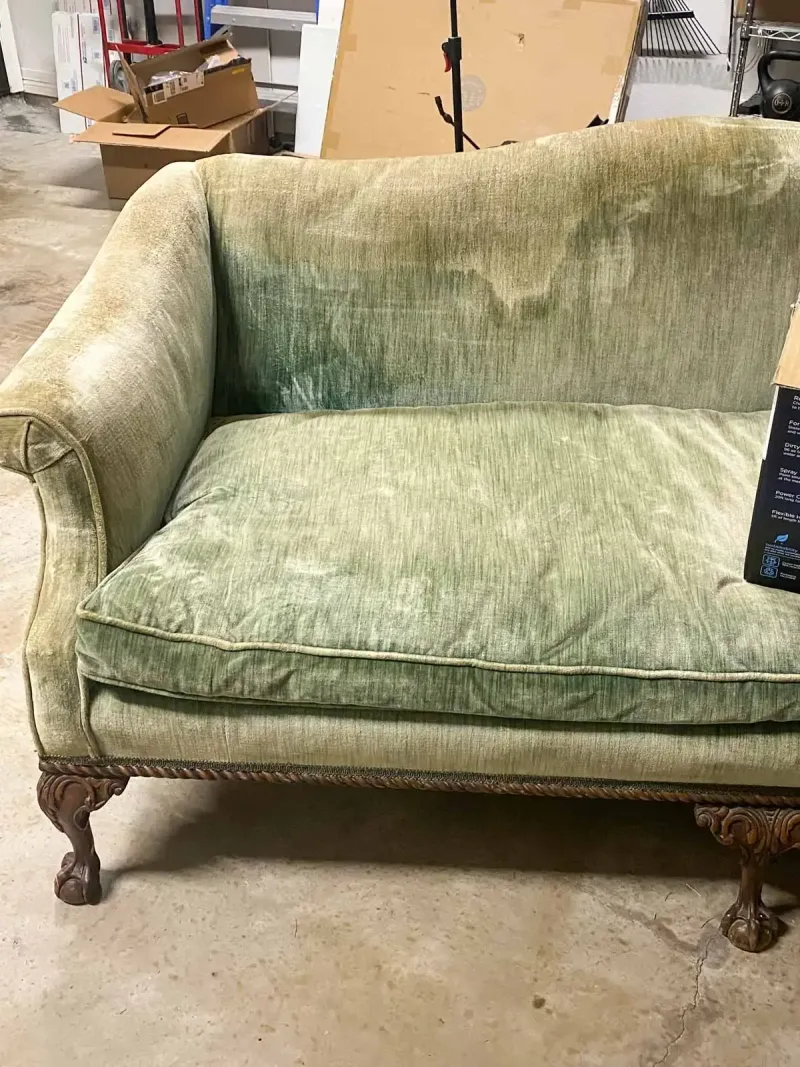
Sun-damaged upholstery with visible fading tells buyers your furnishings have seen better days. When sofa cushions show dramatic color differences between their tops and sides, it creates an impression of wear that extends to the entire home.
Faded curtains, especially those with visible sun lines where folds have protected fabric, instantly date your living room. These telltale signs of aging fabrics make even well-maintained spaces feel tired and neglected.
If replacement isn’t possible, strategic furniture arrangement can hide the worst fading. Slipcovers offer affordable solutions for dated upholstery, while simply removing severely faded curtains completely can improve impressions dramatically. Fresh throw pillows add pops of vibrant color that draw attention away from aging larger pieces.
19. Poor Flooring
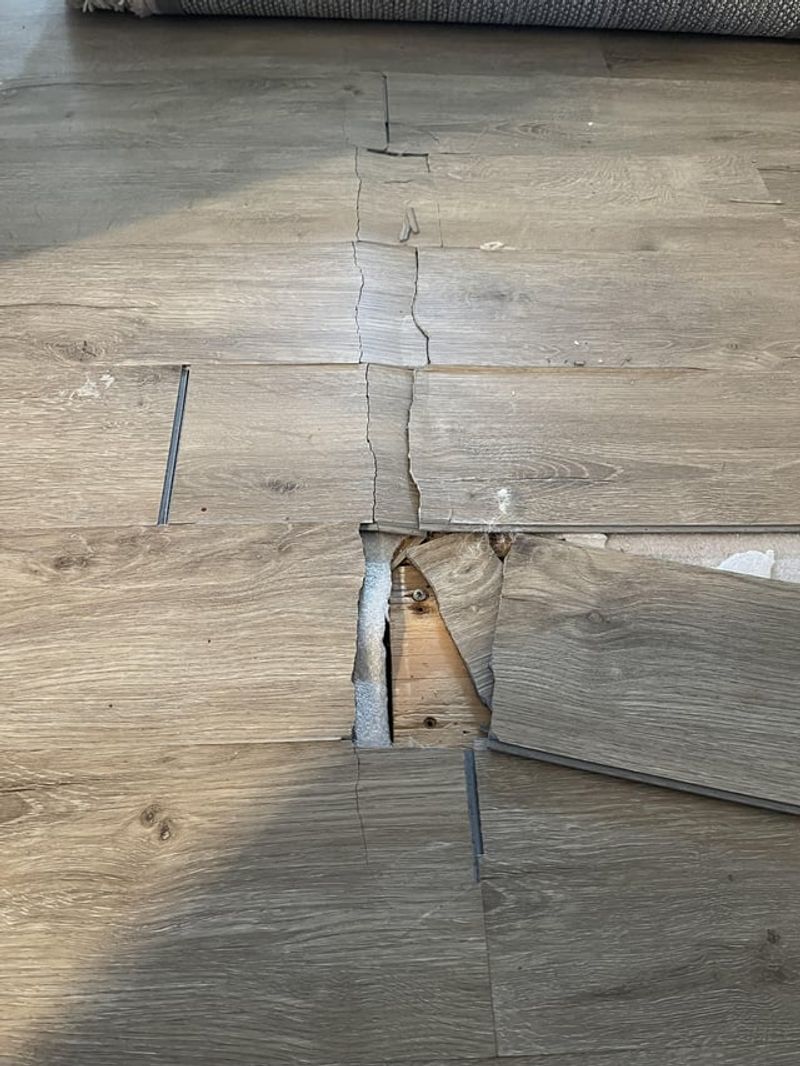
Damaged flooring immediately lowers perceived home value, regardless of other positive features. Scratched hardwood, buckling laminate, or stained carpeting suggests neglect that buyers can’t easily overlook.
Mismatched flooring between connected spaces creates visual choppiness that disrupts flow. When your living room has different flooring than adjacent areas without clear transition points, the home feels disjointed rather than cohesive.
If replacement exceeds your budget, strategic area rug placement can conceal the worst problem areas. Professional floor refinishing often costs less than buyers assume for repairs and can dramatically transform impressions. Even deep cleaning existing flooring makes a significant difference in how buyers perceive overall home maintenance.

